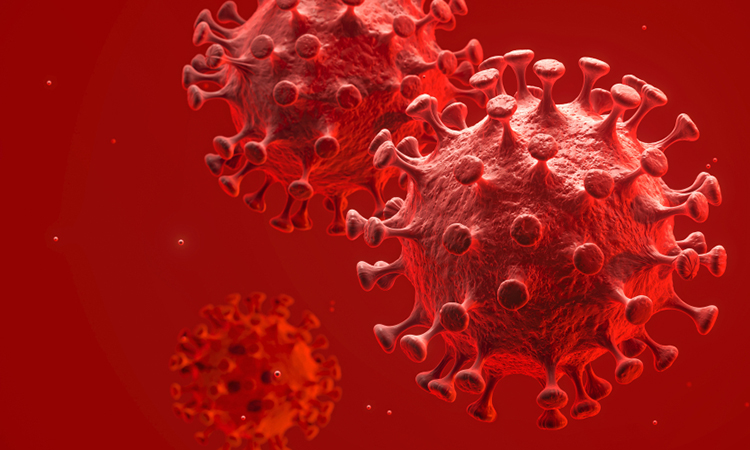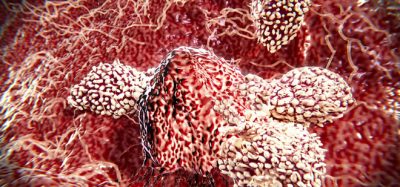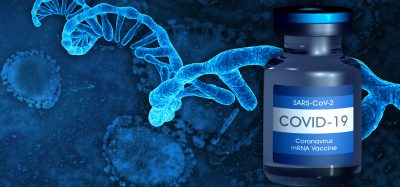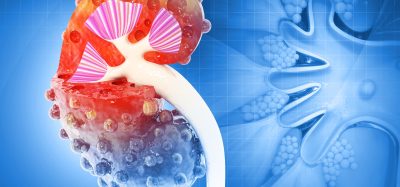Scientists find evidence that SARS-CoV-2 infects cells in mouth
Posted: 26 March 2021 | Victoria Rees (Drug Target Review) | No comments yet
Researchers have shown that SARS-CoV-2 infects mouth cells, which could inform the development of treatments against the oral symptoms of COVID-19.

A team of scientists has found evidence that SARS-CoV-2 infects cells in the mouth. The study was led by a team from the US National Institutes of Health (NIH) and University of North Carolina at Chapel Hill, US.
According to the researchers, while the upper airways and lungs are primary sites of SARS-CoV-2 infection, there are clues the virus can infect cells in other parts of the body, such as the digestive system, blood vessels, kidneys and as this new study shows, the mouth. The potential of the virus to infect multiple areas of the body might help explain the wide-ranging symptoms experienced by COVID-19 patients, including oral symptoms such as taste loss, dry mouth and blistering. Moreover, the findings point to the possibility that the mouth plays a role in transmitting SARS-CoV-2 to the lungs or digestive system via saliva laden with virus from infected oral cells.
Researchers already know that the saliva of people with COVID-19 can contain high levels of SARS-CoV-2. What is uncertain, however, is where SARS-CoV-2 in the saliva comes from. In people with COVID-19 who have respiratory symptoms, virus in saliva possibly comes in part from nasal drainage or sputum coughed up from the lungs. However, this does not explain how the virus gets into the saliva of people who lack those respiratory symptoms.
“Based on data from our laboratories, we suspected at least some of the virus in saliva could be coming from infected tissues in the mouth itself,” said Dr Blake Warner, one of the lead researchers of the study.
To explore this possibility, the researchers surveyed oral tissues from healthy people to identify regions of the mouth susceptible to SARS-CoV-2 infection.
According to the team, vulnerable cells contain RNA instructions for making “entry proteins” that the virus needs to get into cells. RNA for two key entry proteins – known as the (angiotensin-converting enzyme 2) ACE2 receptor and the TMPRSS2 enzyme – was found in certain cells of the salivary glands and tissues lining the oral cavity. In a small portion of salivary gland and gingival (gum) cells, RNA for both ACE2 and TMPRSS2 was expressed in the same cells. This indicated increased vulnerability because the virus is thought to need both entry proteins to gain access to cells.
“The expression levels of the entry factors are similar to those in regions known to be susceptible to SARS-CoV-2 infection, such as the tissue lining the nasal passages of the upper airway,” Warner said.
Once the researchers confirmed that parts of the mouth are susceptible to SARS-CoV-2, they looked for evidence of infection in oral tissue samples from people with COVID-19. In samples collected from COVID-19 patients who had died, SARS-CoV-2 RNA was present in just over half of the salivary glands examined. In salivary gland tissue from one of the people who had died, as well as from a living person with acute COVID-19, the scientists detected specific sequences of viral RNA that indicated cells were actively making new copies of the virus – further bolstering the evidence for infection.
When the team found evidence of oral tissue infection, they confirmed whether those tissues could be a source of the virus in saliva. In people with mild or asymptomatic COVID-19, cells shed from the mouth into saliva were found to contain SARS-CoV-2 RNA, as well as RNA for the entry proteins.
To determine if virus in saliva is infectious, the researchers exposed saliva from eight people with asymptomatic COVID-19 to healthy cells grown in a dish. Saliva from two of the volunteers led to infection of the healthy cells, raising the possibility that even people without symptoms might transmit infectious SARS-CoV-2 to others through saliva.
Finally, to explore the relationship between oral symptoms and virus in saliva, the team collected saliva from a separate group of volunteers with mild or asymptomatic COVID-19. Of the 27 people who experienced symptoms, those with virus in their saliva were more likely to report loss of taste and smell, suggesting that oral infection might underlie oral symptoms of COVID-19.
Taken together, the researchers say the study’s findings suggest that the mouth, via infected oral cells, plays a bigger role in SARS-CoV-2 infection than previously thought.
“When infected saliva is swallowed or tiny particles of it are inhaled, we think it can potentially transmit SARS-CoV-2 further into our throats, our lungs, or even our guts,” said Dr Kevin Byrd, one of the lead researchers.
The study was published in Nature Medicine.
Related topics
Disease Research, Immunology, Molecular Targets
Related conditions
Covid-19
Related organisations
University of North Carolina at Chapel Hill, US National Institutes of Health (NIH)
Related people
Dr Blake Warner, Dr Kevin Byrd







